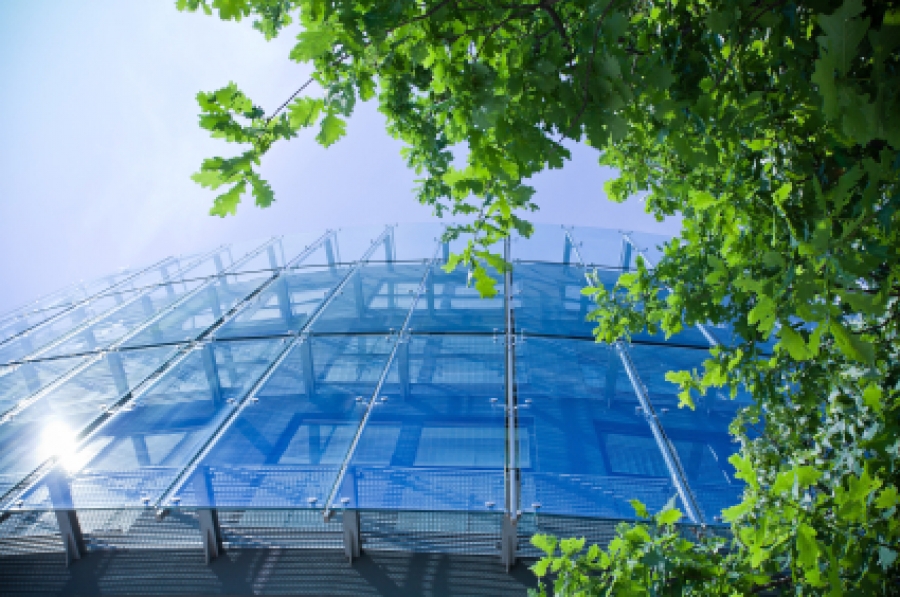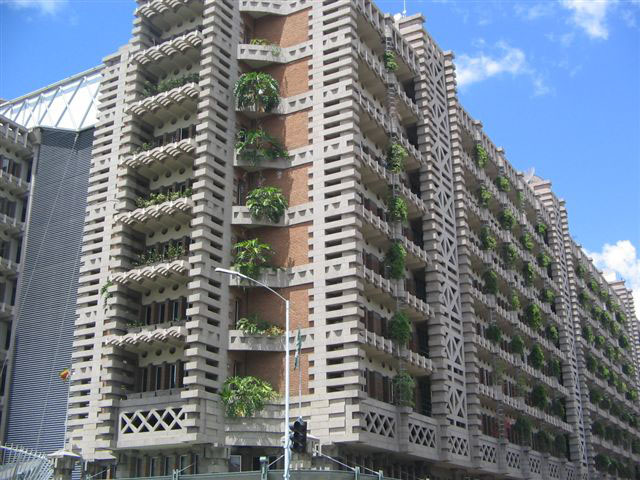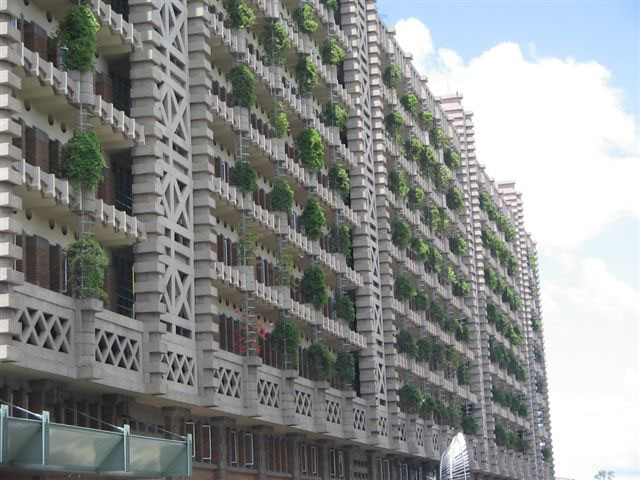Biomimicry: Taking Cues from Nature
The ultimate in green design is nature itself. Here, experts explain the concept of biomimicry and give examples of how buildings can take inspiration from natural systems.
If the past 3.8 billion years have taught us anything, it’s that nature knows best. The field of biomimicry is built upon this premise, drawing inspiration from nature’s systems and processes to find solutions for human needs: “innovation inspired by nature.” The implications of biomimicry for the field of architecture could alter the way we design, the materials we choose, and ultimately even the forms of our buildings.

Bio-what?
Although the term "biomimicry" ("bios" meaning life and "mimesis" meaning to imitate) was coined in the 1970s, it didn’t really gain traction with the public until 1997, when biologist Janine Benyus wrote a book titled Biomimicry: Innovation Inspired by Nature. A year later she co-founded the Biomimicry Guild along with Dr. Dayna Baumeister to offer consulting services to a wide range of clients. In 2006, they founded the Biomimicry Institute, a non-profit organization that provides K–12 and university educational outreach and oversees a biomimicry certification program and various workshops for practicing professionals. These organizations are united under the umbrella of Biomimicry 3.8.
Biologist at the Design Table
The Biomimicry Guild consults with several architecture and design firms, including HOK, with whom they’ve collaborated on over 25 projects. Taryn Mead, a Senior Biologist at the Design Table with Biomimicry Guild, explains the implications of biomimicry on the design process:
“Every natural system performs particular functions — sequestering carbon, cycling nitrogen or water, stabilizing soil — and all of these nutrients moving through the system can be quantified. Imagine a forest full of trees, and then cut five down and build a building in their place: now those functions aren’t necessarily being performed. Our goal is to understand the metrics behind it, such as the former trees’ light reflectance and water filtration rates, and apply those same standards to the building so that it is participating in the ecosystem in the same way that the trees did. It’s not about having ‘no impact,’ but the same impact — the same standard as the native system.”
Mead explains that there are three basic ways to engage biomimicry in the design process: during the scoping phase, creating phase, or evaluating phase. She has experienced the most success when her team is involved as early in the design process as possible. Meeting with the design team and client, they can make goals and determine how nature can best inform the design. If the biologist is brought in later in the project, then he or she can still aid in the design of mechanical systems, source biomimetic materials, and develop an operational plan for long-term results.
Building Form: Case Studies
The poster child for biomimicry in architecture is the Eastgate Centre in Harare, Zimbabwe, designed by architect Mick Pearce with engineers at Arup Associates. The midrise structure’s ventilation system was inspired by that of a termite mound, allowing the building to maintain internal comfort in a hot climate despite its lack of air conditioning. It uses 10% of the energy that a conventional building of the same size would require.


The design of the iconic Swiss Re Insurance Tower in London by Norman Foster, known as “the gherkin” for its unique shape, was actually based on the form of the glass sea sponge. These deep sea organisms survive despite the absence of light, thanks to multi-tiered structures comprised of silicates (glass). The strands wrap and layer in seven different directions, resulting in a structure that is as incredibly strong as it is beautiful, allowing the sponge to filter water and sequester food. In the Swiss Re Tower, floors are staggered around an inner core that serves as a ventilation chamber, resulting in a 40% reduction in energy use to heat and cool the building.
Another compelling example of biomimicry applied in architecture is the Esplanade – Theatres on the Bay in Singapore, designed by DP Architects and Michael Wilford & Partners. The structures feature responsive facades with photoreactors that open and close depending upon the sun’s rays, controlling the amount of light that enters the building. Their appearance is similar to leaves or scales, and the building is affectionately called the “big durian” by locals.
Biomimetic Building Materials
The catalogue of new materials based on biomimetics is ever expanding. Here are a couple of breakthrough examples that could change the way we build and retrofit.
Eco-friendly concrete
The production of concrete is energy-intensive and accounts for a large percentage of energy use in construction. A major ingredient? Limestone (aka calcium carbonate). Calera is a product that imitates the way that sea organisms produce calcium carbonate. Flue gases from coal-fired powered plants are pumped through salt water, allowing carbon to be sequestered and placed into the stable form of concrete.
Photovoltaic “leaves”
Imagine a building covered in ivy. Now imagine that the leaves can harvest energy from the sun and wind to power the building. That’s exactly what SMIT’s Solar Ivy product does: these photovoltaic leaves cover the facade while collecting solar energy. SMIT has also researched using photovoltaic electric crystals on the "stems" to generate electrical energy as wind blows across the facade. The result is a facade that is both aesthetically pleasing and functional — much like nature itself.
Want to learn more about biomimetic materials and systems? Exchange ideas with experts at AskNature.org, a free, open-source platform and community developed by the Biomimicry Institute.

Murrye Bernard
Murrye is a freelance writer based in New York City. She holds a Bachelor's degree in Architecture from the University of Arkansas and is a LEED-accredited professional. Her work has been published in Architectural Record, Eco-Structure, and Architectural Lighting, among others. She also serves as a contributing editor for the American Institute of Architects' New York Chapter publication, eOculus.
Website: www.murrye.com


